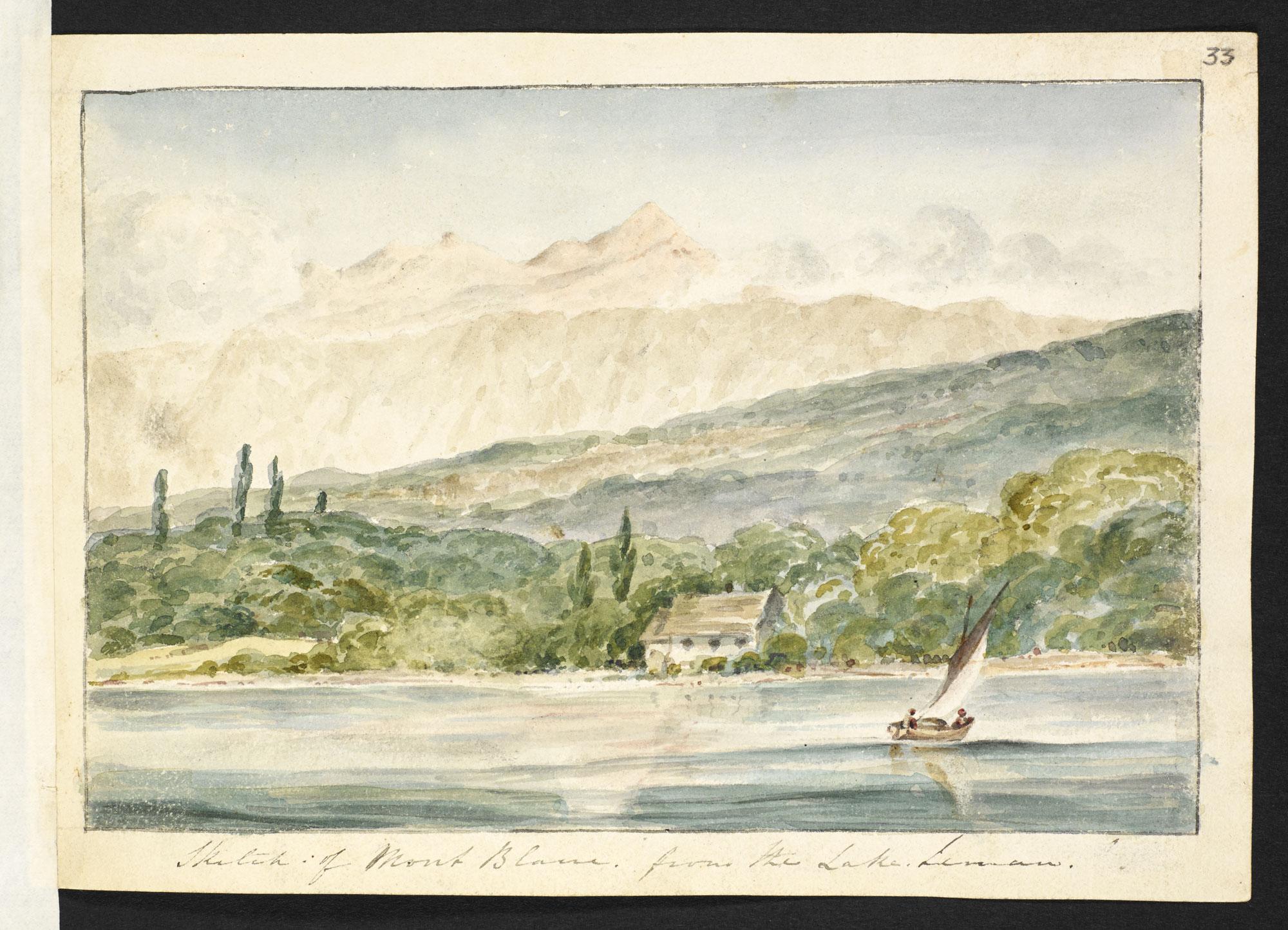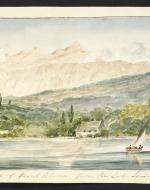Created by Monet Jorgenson on Tue, 02/02/2021 - 11:19
Description:
This watercolor painting, entitled "Painting of Mont Blanc from the Miscellaneous Papers of Jane Williams" was painted in 1819 by Edward Williams. The artist stood across Lake Geneva from this perspective, allowing us to see Mont Blanc in all its sublime glory. Percy Shelley's poem "Mont Blanc" is one of the staples of Romantic literature, specifically poetry, during this time, and so this mountain is almost an artifact of the Romantics, although it still exists today, of course. The mountain is the highest in the Alps and Western Europe, resting on a border between Italy and France. The exact elevation is unknown, due to the mountain's caps being primarily snow and ice, though on certain dates it has been measured to be between 15,771 feet and 15,772 feet. It is no wonder that the mountain caught the eye of Shelley, in search and in awe of the majesty of the world around him, in true Romantic fashion. Edward Williams, in fact, was not only a good friend of Shelley's but his Amanuensis, which merely means a literary or artistic assistant. It seems that as Shelley created beautiful poems that captured the sublime vision of Mont Blanc, Williams created his own paintings of how he saw the beauty of the same vision. The mountain also makes an appearance in Frankenstein, a novel by Mary Shelley (Percy Shelley's wife). Clearly, the mountain left not only an impression on the likes of the Shelley family and Romantic writers of the time but also an impression on history leftover from their endeavors to paint and write the mountain in such beauty.
This artwork is held by the British Library. https://www.bl.uk/collection-items/painting-of-mont-blanc
Copyright:
Associated Place(s)
Timeline of Events Associated with Painting of Mont Blanc from the Miscellaneous Papers of Jane Williams
Part of Group:
Featured in Exhibit:
Artist:
- EDWARD WILLIAMS


